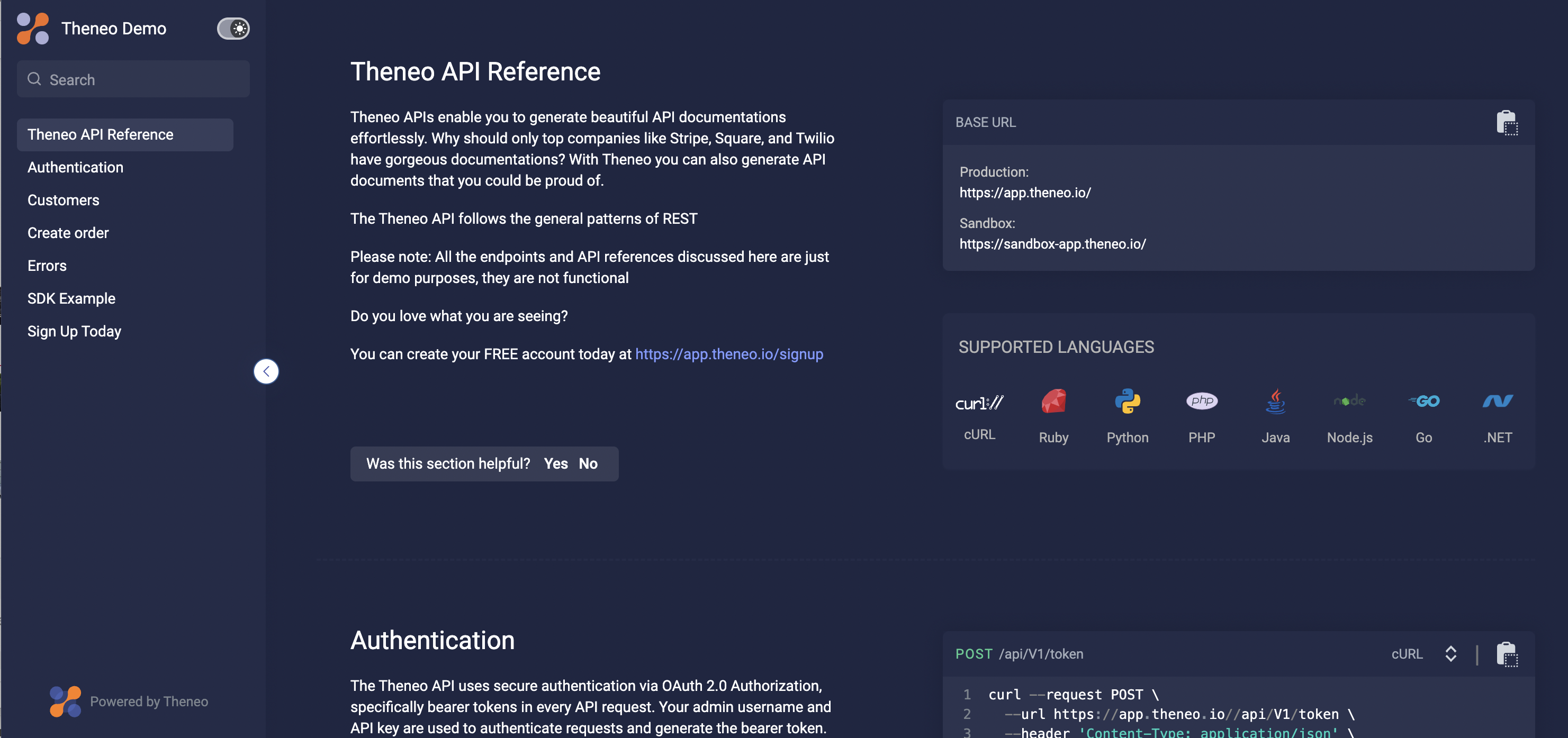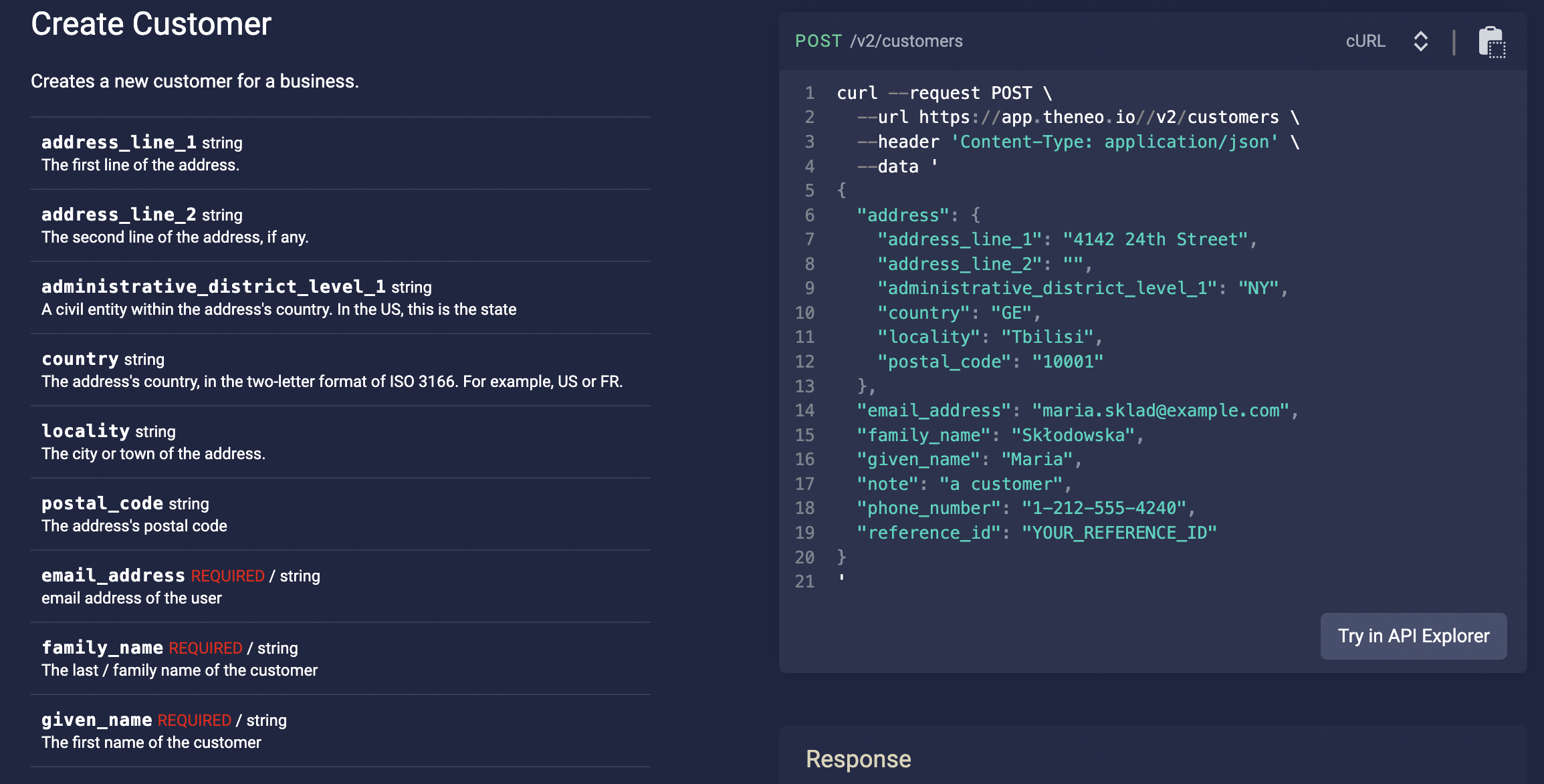A new company is taking a leaf out of Stripe’s API playbook with a platform that makes it easy for any company to create clear API documentation, while also allowing non-technical team members to contribute to the process.
Demoing as part of the Battlefield 200 cohort at TC Disrupt this week, TechCrunch met up with Theneo to find out how they plan to get their slice of the $4.5 billion API management market — a figure that’s predicted to rise to nearly $14 billion within five years.
APIs, or “application programming interfaces,” are the glue that hold most modern software together. They’re what allow Uber to offer in-app messaging without building the entire infrastructure themselves from scratch, fitness apps to visualize your running history through maps and online merchants to support payments powered by Stripe. Internally, companies also create their own APIs to connect all manner of back-end systems and data stores.
In short, APIs are the hidden, often unsung heroes of the modern technological era. But creating an API that’s easy to use and adopt by developers comes with inherent challenges. It isn’t enough to just build the API — its features, functionality and deployment instructions need to be recorded and presented in a format that’s easy to follow. Getting the API documentation right is imperative, which is where Theneo is hoping to make its mark.

Sample API documentation from Theneo. Image Credits: Theneo
Stripe-like API docs
Theneo co-founder and CEO Ana Robakidze said that she’d worked on hundreds of APIs in a previous role heading up an engineering team, concluding that quality API documentation is often lacking.
“I personally witnessed the effect API documentation had on our project’s delivery, cost, and efficiency,” Robakidze said. “As a result, as a team leader, I spent a considerable amount of time and effort searching for a tool that would assist us in creating excellent API documentation — similar to what Stripe has, as it is considered one of the best in the industry. The problem with most of the tools is that they were either time-consuming or had too many limitations.”
The root of the problem, according to Robakidze, is that developers aren’t necessarily technical writers — they’d much rather “create another API than document it,” she said. Consequently, a lot of internal APIs specifically (i.e. APIs built for connecting a company’s internal systems and apps) either go completely undocumented, or if they are documented, aren’t synchronized and maintained as the API evolves. This issue is compounded as developers come and go within a company, often leading to an unwieldy mess.
“Theneo was created through frustration, with the aim of making high-quality API documentation quick to generate, and simple to maintain,” Robakidze said.
With Theneo, developers connect their GitHub repository or upload their API collection, and Theneo then analyzes everything and delivers the required API documentation. It also offers an AI assistant that uses natural language processing (NLP) to improve the documentation, including automatically describing the different API attributes, which are basically the parts of the API specification that developers need to request, send and delete data, and so on. So a “create customer” object, for example, contains various attributes each with a definition so that the user (i.e. developer) knows exactly what the attribute is for.
“Our AI assistant develops descriptions for these fields, which often take a developer or technical writer a significant amount of time to create, especially when there are thousands of fields in your APIs,” Robakidze explained.

Theneo: Sample API document showing fields / attribute descriptions. Image Credits: Theneo
While Theneo is designed to automate the process as much as possible, it’s clearly not going to deliver a gift-wrapped API documentation entirely off its own volition — it acknowledges that developers and other team members will need to fine-tune formats and wording, add more images or whatever it needs.
“We analyze the API, parse it, and then return an already well-structured API doc,” Robakidze said. “The user can then choose whether to add more details, such as images, and different API widgets, and add team members so they can collaborate.”
While the engine underpinning Theneo is the same across both internal and external APIs, the company provides additional tooling for the latter, acknowledging that third-party developers appreciate a slicker interface that’s easier to follow. So this basically amounts to a white-label product that can be tailored and branded in accordance with the company’s requirements.
In terms of pricing, Theneo currently has a basic plan that costs around $20 per month per user, rising to $45 per month for unlimited API projects on the business plan. It also offers an enterprise plan that unlocks features such as customized branding and the ability to self-host. It’s also working on a completely free version, though Robakidze said this wasn’t ready for prime time quite yet.

Theneo co-founder and CEO Ana Robakidze.
Funding
The Y Combinator (YC) graduate has already raised $1.5 million in pre-seed funding since it was founded exactly a year ago, and this week confirmed it’s in the process of raising further funding. And it also unveiled an updated documentation editor, which Robakidze described as something akin to “Figma for APIs,” designed for everyone involved in a software project to contribute, regardless of their technical prowess.
“We realized that there are multiple players when it comes to building APIs or API docs, and that it is crucial for these users to collaborate,” Robakidze explained. “Similar to what Figma did with collaboration, our API documentation editor allows users to collaborate, so managers and non-technical members can easily work together on content and produce high-quality documents.”
Robakidze said that the company is pretty much open to working with any size and type of business, and it’s currently working with some 3,000 companies, spanning everything from fintechs and government agencies to agriculture companies.
“Our biggest customers are fintech companies, usually with 20-plus developers,” Robakidze said.
It’s somewhat fitting that Theneo is seeing particular traction within fintech, given that it’s looking to emulate one of the biggest fintech startups to emerge in the past decade. Stripe is well-known for its payment processing API used by startups and big tech firms alike, including Google and Amazon, and the documentation it provides plays a part in why it’s liked by developers.
“One of the reasons I like working on the Stripe integration is because their API documentation is very well organized, has a very well-thought-out user interface, and generally makes it simple for developers to obtain the information they need to integrate with them,” Robakidze said. “When I was working on other Stripe alternatives, it would often take me twice as long because of how challenging it was to browse and locate the necessary API information. Developers adore Stripe’s API documentation, so we wanted to make sure that other businesses and developers could generate the same high-quality documentation.”
Theneo wants to bring Stripe-like API documentation to all developers by Paul Sawers originally published on TechCrunch
from TechCrunch https://ift.tt/SYVNX50



No comments:
Post a Comment